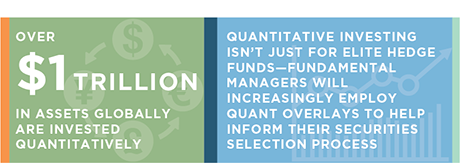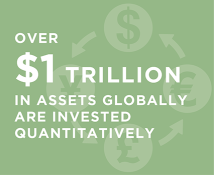
For decades, the universe of institutional investors has been largely split into two camps: fundamental investors and quantitative investors (quants). The former generally made investment decisions based on earnings statements and, of course, company fundamentals. The latter were less concerned with the CEO’s quarterly comments and more interested in what historical data could tell them about the price of the security going forward. Today, however, we are in a world in which long-understood definitions are no longer clear, and the lines defining investors, dealers, market makers, and investment analysis approaches are increasingly blurry.
Fundamental managers are using machine learning to analyze earnings statements and examine market moves based on past company or macroeconomic news, an approach sometimes referred to as a quantitative overlay. Conversely, quantitative analysts now have access to alternative data sources—such as store traffic from mobile phones or social media sentiment—that allows them to systematically make investment decisions on individual names. Furthermore, the majority of the world’s leading asset managers have both fundamental and quantitative funds. As the lines continue to blur, a new investment approach has emerged—quantimental. These evolutions make the once easy task of defining quantitative investing all the more complex.
MethodologyThroughout March and April of 2018, Greenwich Associates spoke with experts in quantitative investing to better understand their role in the marketplace, broadly held misconceptions about quantitative investing and how tools used by quantitative investors are benefiting the broader investment community. This research also leveraged interviews with 262 U.S. equity investors in the first quarter of 2018 and 472 institutional investors (i.e., pensions, endowments) throughout 2017.

